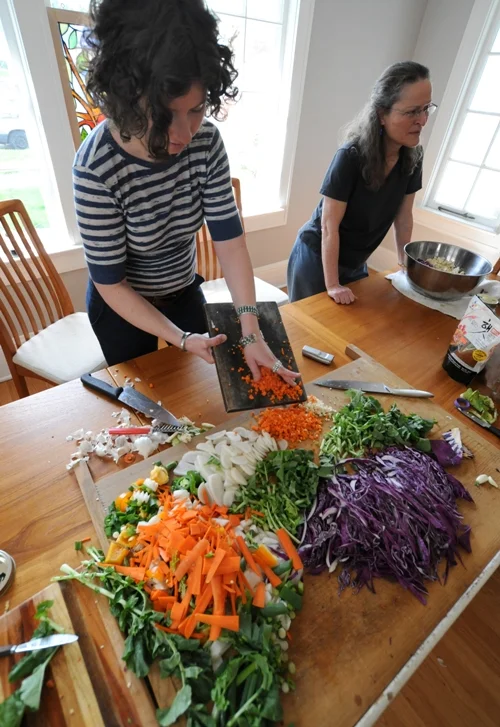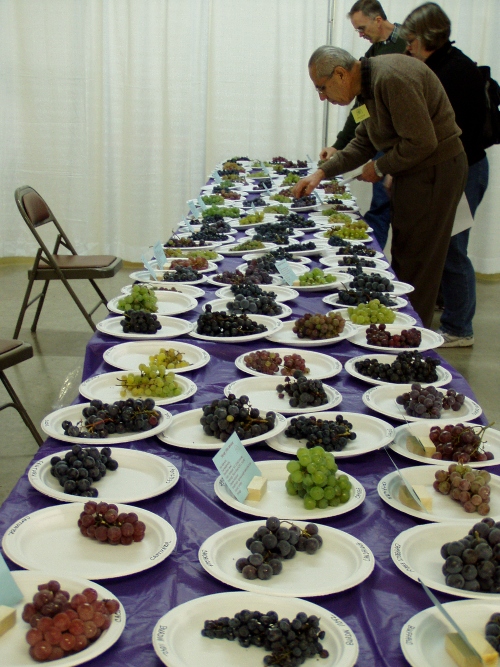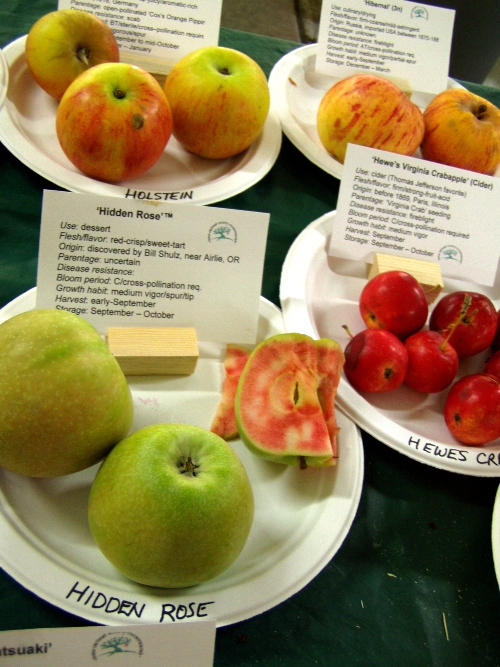We clean up, exchange numbers and say goodbye in the early afternoon. I head home and unload my kraut supplies—towel-wrapped knives, stainless steel bowls, cutting boards—and arrange my jars of kraut on a lasagna tray (in case they bubble over during ferment) on the kitchen table where they ferment at room temperature, submerged in brine and partially covered, for a little more than a week.
Some like their kraut soft and pungent so they ferment it for weeks while others like theirs crisp and mild which usually only takes a few days. I generally like mine somewhere in between the two—flavorful but still nice and crunchy. I taste my homemade kraut periodically as it ferments and once it’s to my liking I jar it, cap it and put it in the fridge to stop further fermentation.
After my first Portland Kraut Collective gathering I end up with kraut from three different batches and my favorite is the one with red bell peppers and black radish which I put on salads, rice dishes, sandwiches and more. Sometimes when a batch of kraut is especially good I don't even bother with a bowl or plate and just eat it right out of the jar. That said, a Reuben layered with crisp, sour homemade kraut and homemade spicy chile sauce in lieu of 1,000 Island dressing is a gift from the sandwich gods.
Even though George Winborn is used to more formal gatherings at his home – his husband is a concert pianist and the couple regularly entertains with home concerts to the tune of Johannes Brahms and Franz Schubert -- it's clear that Portland Kraut Collective is here to stay. Although other members have hosted the gatherings Winborn seems to own it from the moment he welcomes you at the door to when he sweetly but curtly says to everyone milling around in the kitchen, "All right, should we get chopping?"
A morning spent talking about food, gardening, cooking and then some while crafting delicious collective batches of kraut to feed us in the weeks ahead is my idea of a morning well spent. I'll definitely be back for more if the Heads of Cabbage will have me.
The following recipe is abridged from Sandor Ellix Katz's sauerkraut recipe in Wild Fermentation: The Flavor, Nutrition and Craft of Live-Culture Foods. Wild Fermentation is one of my most used and favorite kitchen references. Visit Sandor's site for more information on all things fermented.
Sandor Ellix Katz's Sauerkraut Recipe
Timeframe: 1-4 weeks (or more)
Special Equipment:
* Ceramic crock or food-grade plastic bucket, one-gallon capacity or greater
* Plate that fits inside crock or bucket
* One-gallon jug filled with water (or a scrubbed and boiled rock)
* Cloth cover (pillowcase or towel)
Ingredients (for 1 gallon):
* 5 pounds cabbage
* 3 tablespoons sea salt
Process:
1. Chop or grate cabbage, finely or coarsely, with or without hearts. You can mix green and red cabbage to end up with bright pink kraut. Place cabbage in a large bowl as you chop it.
2. Sprinkle salt on the cabbage as you go. The salt pulls water out of the cabbage and creates the brine in which the cabbage can ferment and sour without rotting. The salt also keeps the cabbage crunchy, by inhibiting organisms and enzymes that soften it. 3 tablespoons of salt is a rough guideline for 5 pounds of cabbage. Use a bit more salt in summer, and a bit less in the winter.
3. Be creative and add as many other vegetables as you want. Some tasty kraut vegetables include onions, garlic, seaweed, greens, Brussels sprouts, grated carrots, turnips, beets, and burdock roots. You can also add fruits (apples, whole or sliced, are classic), and herbs and spices (caraway seeds, dill seeds, celery seeds, and juniper berries are classic, but anything you like will work).
4. Mix ingredients together and pack into crock, food grade bucket or glass jar. Pack just a bit in at a time and tamp it down hard using your fists or any (other) sturdy kitchen implement. The tamping packs the kraut tight in the crock and helps force water out of the cabbage.
5. Cover kraut with a plate or some other lid that fits snugly inside the crock. Place a clean weight (a glass jug filled with water) on the cover. This weight forces water out of the cabbage and keeps the cabbage submerged under the brine. Cover the whole thing with a cloth to keep dust and flies out.
6. Press down on the weight to add pressure to the cabbage and help force water out of it. Continue doing this periodically (as often as you think of it, every few hours), until the brine rises above the cover. This can take up to about 24 hours, as the salt draws water out of the cabbage slowly. If the brine does not rise above the plate level by the next day, add enough salt water to bring the brine level above the plate. Add about a teaspoon of salt to a cup of water and stir until completely dissolved.
7. Leave the crock to ferment in an unobtrusive corner of the kitchen or somewhere else where you won’t forget about it.
8. Check the kraut every day or two. The volume reduces as fermentation proceeds. Sometimes mold appears on the surface. Many books refer to this mold as “scum,” but I prefer to think of it as a bloom. Skim what you can off of the surface; it will break up and you will probably not be able to remove all of it. Don’t worry -- it’s just a surface phenomenon, a result of contact with the air. The kraut itself is under the anaerobic protection of the brine. Rinse off the plate and the weight. Taste the kraut. Generally it starts to be tangy after a few days, and the taste gets stronger as time passes. In the cool temperatures of a cellar in winter, kraut can keep improving for months and months. In the summer or in a heated room, its life cycle is more rapid. Eventually it becomes soft and the flavor turns less pleasant.
9. Enjoy. I generally scoop out a bowl or jarful at a time and keep it in the fridge. I start when the kraut is young and enjoy its evolving flavor over the course of a few weeks. Try the sauerkraut juice that will be left in the bowl after the kraut is eaten. Sauerkraut juice is a rare delicacy and unparalleled digestive tonic. Each time you scoop some kraut out of the crock, you have to repack it carefully. Make sure the kraut is packed tight in the crock, the surface is level, and the cover and weight are clean. Sometimes brine evaporates, so if the kraut is not submerged below brine just add salted water as necessary.
10. Develop a rhythm. I try to start a new batch before the previous batch runs out. I remove the remaining kraut from the crock, repack it with fresh salted cabbage, then pour the old kraut and its juices over the new kraut. This gives the new batch a boost with an active culture starter.


























